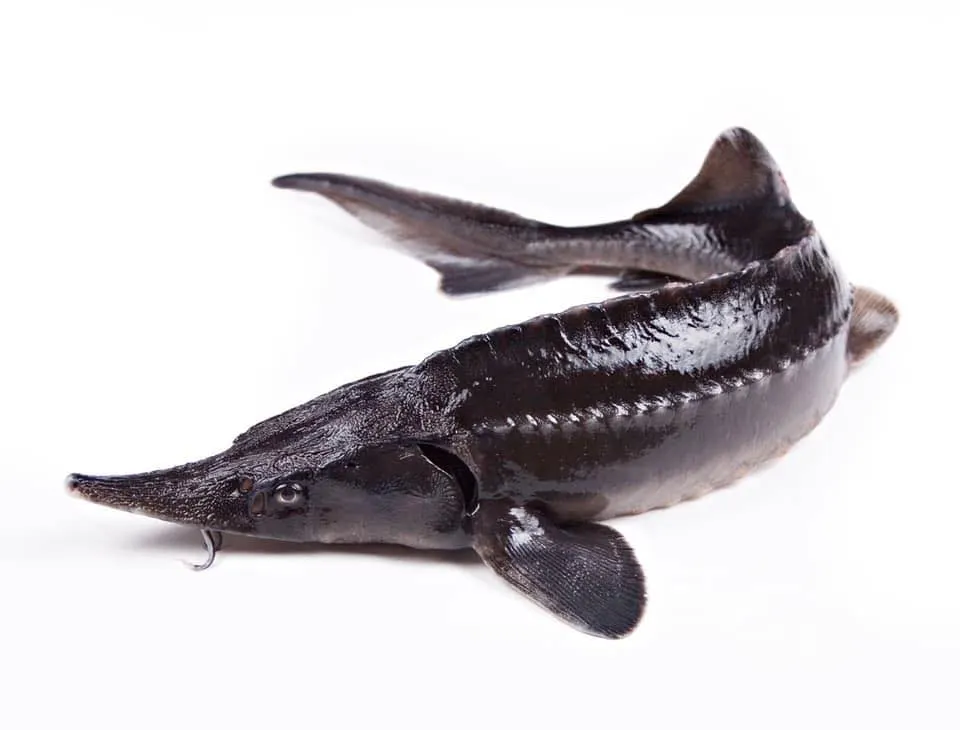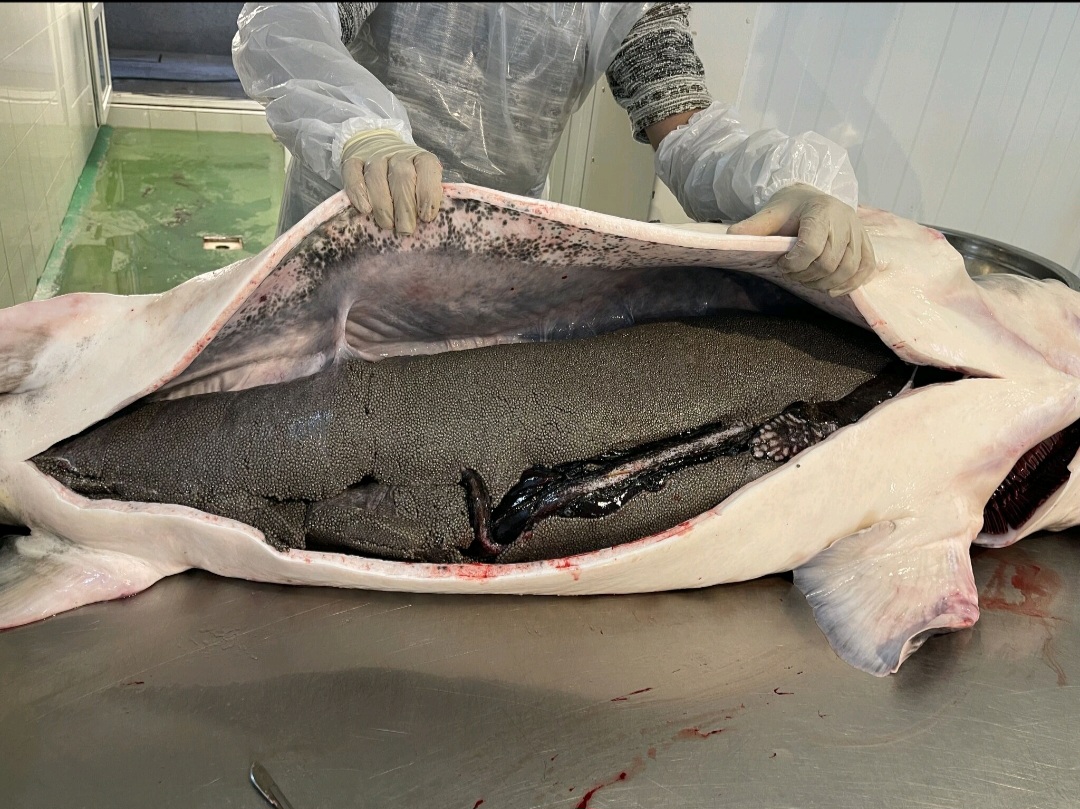
Sturgeon Fish Appearance and Caviar Product
Sturgeon fish are members of the Acipenseridae family, predominantly inhabiting rivers, lakes, and northern marine environments.
1. Sturgeon Fish Characteristics: External Traits and Identification
Sturgeon fish possess several distinctive traits that differentiate them from other fish species. Notable external characteristics include:
-
Elongated, oval-shaped body: Sturgeon fish generally feature long, oval bodies that facilitate their movement in cold, deep waters.
-
Robust skin and protective scales: Unlike many fish, sturgeon are covered with bony plates or tough scales that serve as armor, safeguarding them from predators and challenging habitats.
-
Downward-oriented mouth lacking teeth: Sturgeon fish have a mouth that is oriented downward, adapted for foraging food from the seabed, and they do not possess teeth like other fish.
-
Sensory whiskers around the mouth: Sturgeon fish are equipped with whiskers or sensory feelers near their mouths, which assist them in locating food in the water.
-
Significant size: Certain sturgeon species, such as the Beluga, can reach lengths exceeding 5 meters.
Goharshid Sanat Naghshe Jahan Company
The Caviar Product: Different Types and Their Features
Caviar is the salted eggs of sturgeon fish, considered a luxury and high-priced food. The appearance and quality of caviar can vary depending on the fish species and harvesting process. Below are the different features of this product and its types:
1. Caviar Appearance Features
-
The Characteristics of Caviar Eggs: Caviar eggs come in a range of sizes, from small to large. Certain varieties, such as Beluga, feature larger eggs, while others, like Sevruga, are known for their smaller size.
-
Color Variation: The color of caviar can differ based on the species of fish and its geographical origin, presenting hues that can include golden, brown, green, and black.
-
Flavor and Consistency: Genuine caviar offers a subtle, slightly smoky flavor accompanied by a smooth, creamy consistency. Both the flavor and texture can change depending on the fish species.
-
Luster and Clarity: Premium caviar is generally characterized by its transparency and luster, which reflect the product's quality.
-
Integrity and Form of the Eggs: The eggs should remain whole, free from cracks or visible damage, which is a sign of superior quality.
Goharshid Sanat Naghshe Jahan Company
2. Types of Caviar and Their Features
-
Beluga Caviar
-
Appearance: Large, light grayish-silver eggs.
-
Taste: Subtle and smoky flavor profile.
-
Special Feature: Sourced from the largest sturgeon species, the Beluga, it is among the rarest and most costly caviar varieties
-
Osetra Caviar
-
Appearance: Medium-sized eggs that vary in color from golden to brown.
-
Taste: Rich and intricate, featuring a hint of nuttiness.
-
Special Feature: Derived from the Osetra sturgeon, it is one of the most sought-after caviar types.
-
Sevruga Caviar
-
Appearance: Small eggs, typically dark gray or black in hue.
-
Taste: More robust and saltier compared to other caviars, with a less creamy texture.
-
Special Feature: Recognized for its higher salt content than other caviar varieties.
-
Astra Caviar
-
Appearance: Small eggs that range in color from golden to brown.
-
Taste: Sweeter and smoother than its counterparts.
-
Special Feature: Valued for its mild flavor, making it a favored option for special events.
-
Champagne Caviar
-
Appearance: Small, lustrous eggs, usually silver in color.
-
Taste: Delicate and fruity.
• Special Feature: Considered rare and often regarded as a luxurious caviar choice.
Goharshid Sanat Naghshe Jahan Company

Caviar Harvesting and Processing Methods
-
Natural Harvesting: This technique involves the extraction of eggs from live fish in a manner that ensures their well-being, representing a more expensive yet ethical approach.


